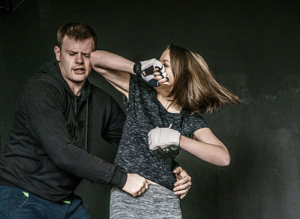Survival Tips When You are Lost in the Woods
It’s that time of the year again. And getting lost in the woods is NOT fun and sometimes deadly. But you have a chance if you are lucky and have a clue. A hiker from Hawaii, was found alive after being lost in the wilderness for 17 days. Though it might not seem likely that it could happen to you, it could really happen to anyone. So, it’s important that you know what you should do if you get lost in the woods. The Hawaii did a lot right, according to sources, and it saved her life. She was able to find fruit, like berries and guava, and only drank water when she could see that it was absolutely clear. On top of that, though she got a terrible sunburn and hurt her knee, she was able to nurse herself back to relative health.
 If you are injured or lost, it is imperative that you know how to survive in the woods. Most people don’t understand that even though you should be waiting to be rescued, you have to keep yourself alive, too.
If you are injured or lost, it is imperative that you know how to survive in the woods. Most people don’t understand that even though you should be waiting to be rescued, you have to keep yourself alive, too.
Here are some tips to help you survive if something has you lost in the wilderness:
First, Stop and Breathe
As soon as you realize that you are lost, remember to stop…and to STOP. This is a mnemonic term meaning:
- Stop – stay where you are, sit down, and don’t panic.
- Think – what the right thing to do might be depends on your situation and location. According to the US Forest Service, it is best to stay where you are until you absolutely need to move.
- Observe – Look around and try to get some information about where you are. Think about supplies you might have like a map or a compass. Are there any signs that you are near a trail or an intersection?
- Plan – Finally, make a plan about what your next course of action will be. You may want to move forward, you might want to backtrack, or you might think it’s best to stay right where you are.
Think Ahead
Now that your realize you are lost, it’s too late to make a plan on how not to get lost. However, since it’s very likely that you are not currently lost, (and if you are, and reading this, stop and call 911) take some time to consider the following:
- Always tell people where you are going. If you are going on a hike, for instance, tell a friend or family member where you are planning on going.
- Bring essential survival gear like sunscreen, bug spray, first-aid supplies, a flashlight, and even an emergency shelter.
- Do everything you can to make sure you can communicate if you have an emergency. Go out with a fully charged cell phone, and if you can, bring a backup battery. If you go deep out into the wilderness, consider an emergency GPS beacon, too.
Understand How the Rescue Process Works
If you do need to be rescued, you should understand how the process works. Most people think it’s like the movies. Your loved ones call the police, and they immediately start to search. However, that’s not really the case.
Most often, the cops get a call from the person who is reporting you missing. They will then start gathering information as a lot of people simply run off.
If they do believe that you might be lost, only then will they start looking. If you have used your cell phone, they can try to use cell towers to pick up a signal. They can do that even if your phone is turned off. Authorities will also get a description of you, including where you might be and what you wore.
The good news is this: approximately 97 percent of those who get lost are eventually recovered within 24 hours of going missing. However, the odds of a better outcome go down the longer you are out there. So, make sure you are well-prepared.
Written by Robert Siciliano, CEO of Credit Parent, Head of Training & Security Awareness Expert at Protect Now, #1 Best Selling Amazon author, Media Personality & Architect of CSI Protection Certification.

 At least one criminologist believes that the driving force behind mass shootings is a desire for celebrity status. According to Adam Lankford, a criminologist at the University of Alabama, they want to be famous.
At least one criminologist believes that the driving force behind mass shootings is a desire for celebrity status. According to Adam Lankford, a criminologist at the University of Alabama, they want to be famous. We’ve all heard about the man approaching a child, showing her a picture of his “lost” puppy, asking the child to help him look for “Truman” or “Roxie.” The child goes off with the predator – never again seen alive.
We’ve all heard about the man approaching a child, showing her a picture of his “lost” puppy, asking the child to help him look for “Truman” or “Roxie.” The child goes off with the predator – never again seen alive. Most of us are taught to not hurt other people. We teach our children to have manners and to be kind to others. This is a process known as “civilized conditioning,” and it allows us to live in a civilized society.
Most of us are taught to not hurt other people. We teach our children to have manners and to be kind to others. This is a process known as “civilized conditioning,” and it allows us to live in a civilized society. Cane
Cane


























